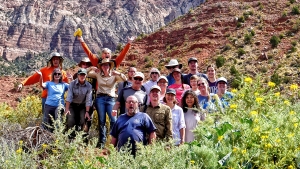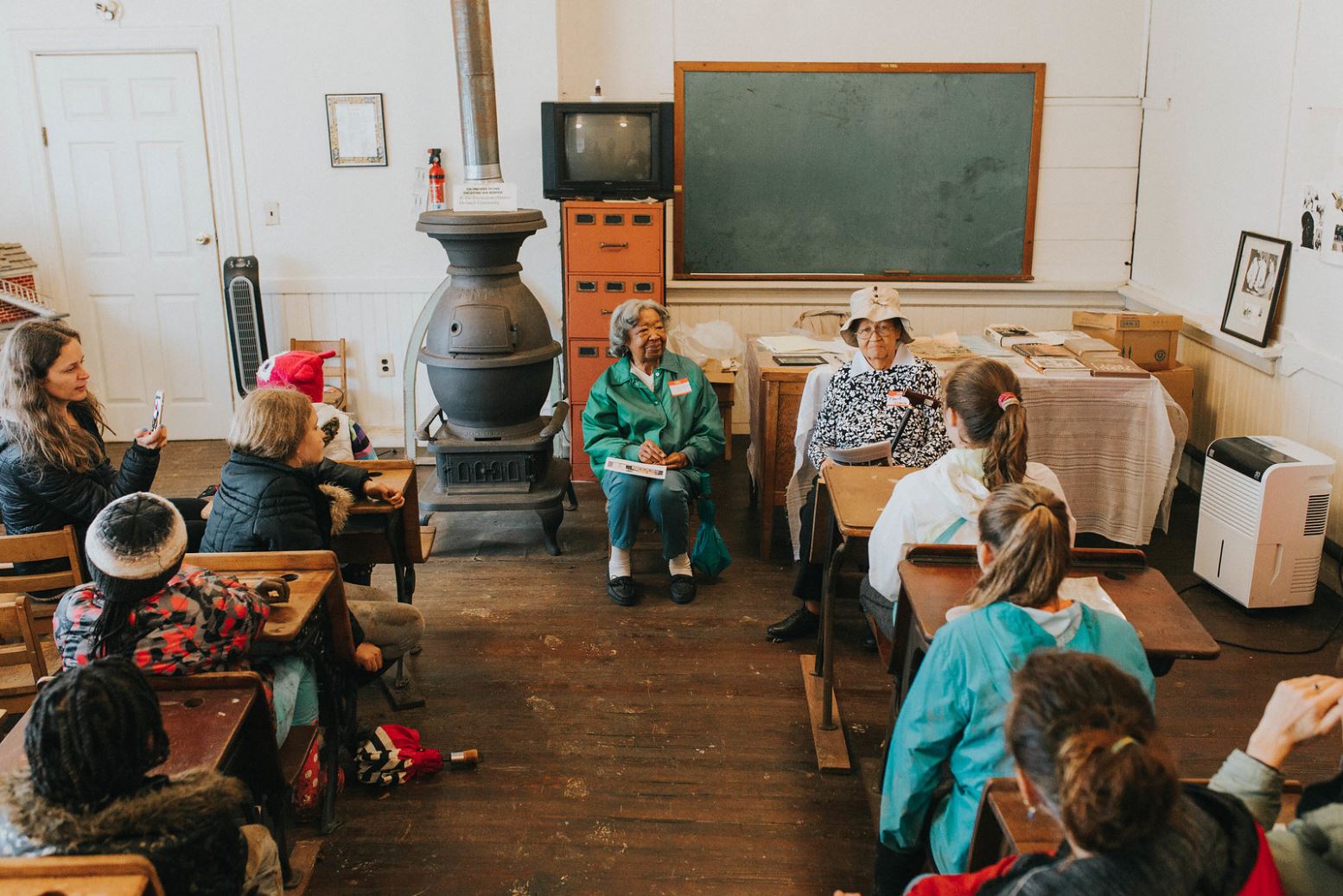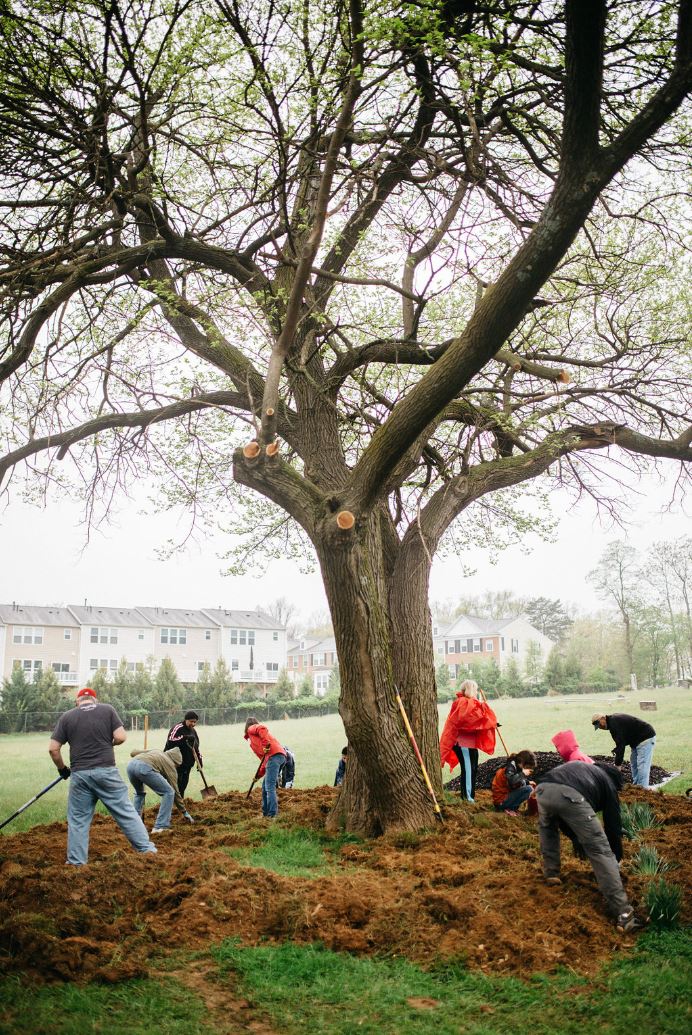Let's Do Service! Successful Weekend in Zion National Park
In a combined celebration of National Public Lands Day, 20 volunteers from LDS Earth Stewardship and the Sierra Club worked together on a service project during the last weekend of September in beautiful Zion National Park. Tasks completed included removal of Russian Thistle (commonly known as Tumbleweed), gathering of seeds such as Side Oats Grama, roof netting removal, plant tube washing and stacking, and native plant seed sorting and cleaning. Altogether, they volunteered the equivalent of one staff employee working four 40-hour weeks!
 A definite highlight was a presentation by Nathan Waite, an editor on the Joseph Smith Papers Project and an editor of A Zion Canyon Reader. Nate is a native of the area and gave a history of Zion and how it was first “discovered” and named and re-named. Anecdotally, he included his misadventures in having to be rescued by helicopter when he was canyoneering and mistook Missed It Canyon for Mystery Canyon!
A definite highlight was a presentation by Nathan Waite, an editor on the Joseph Smith Papers Project and an editor of A Zion Canyon Reader. Nate is a native of the area and gave a history of Zion and how it was first “discovered” and named and re-named. Anecdotally, he included his misadventures in having to be rescued by helicopter when he was canyoneering and mistook Missed It Canyon for Mystery Canyon!
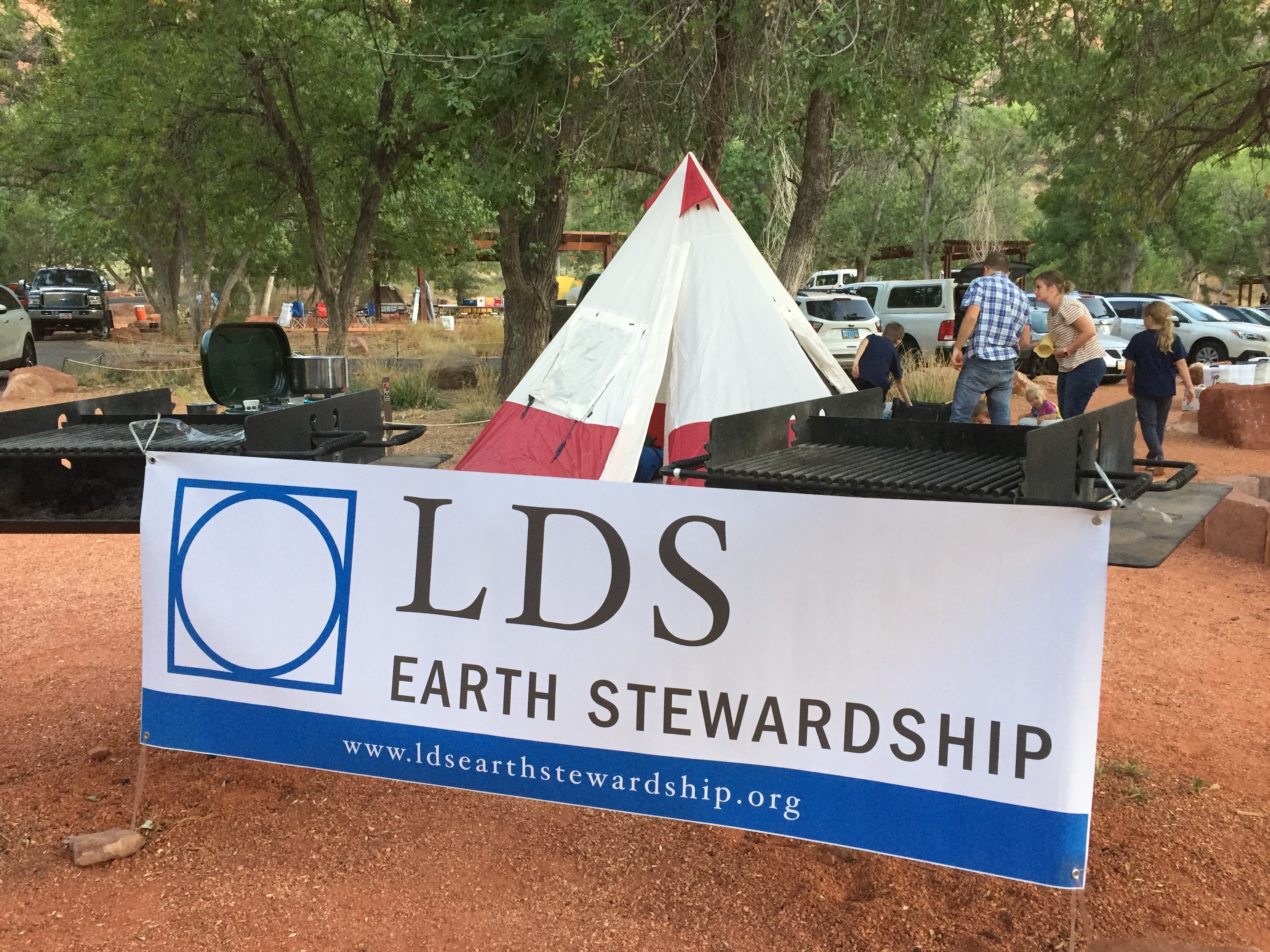
Chapa Tu Basura!
While serving his mission in Peru, Clayton Thomas Kearl fell so in love with the culture, language, and people that he decided to live there after graduating from BYU–Hawaii. Sharing his passion for Peru on social media has garnered many thousands of followers who know him as Gr3ngasho. With that influence, he’s chosen to take on an environmental problem that plagues his beloved Peru: littering.
The movement Thomas started is called “Chapa Tu Basura”—an idiomatic phrase meaning "pick up trash." To raise awareness, he is running over 1,500 miles along Peru’s coast and hosting clean-up events along the way. The goal is to inspire people to do their part, big or little, to keep their home country clear of litter.
To follow his trek along the Peruvian coast, watch this video and visit his Instagram account.
Serve & Learn Earth Day 2019

Bring your family and friends and join us for Earth Day. We have two meaningful activities that will give you the opportunity to serve and learn.
Our Saturday morning service project is a land clean-up near Saratoga Springs, Utah. There is a lot of trash and debris that has been left behind in a beautiful area that looks out over Utah Lake. After spending a few hours cleaning up, we will take a break and have an archeologist teach us about the Native American petroglyphs in the area. This project will be good for your soul.
On Monday evening, bring your family to hear Matthew C. Godfrey, the general editor and managing historian for the Joseph Smith Papers. He is an expert on environmental studies within the Church, and his topic, "Earth Will Appear as the Garden of Eden: Joseph Smith, the City of Zion, and the Natural World," will be applicable to us as members of the Church and earth stewards today. This passage (taken from the description of his essay collection) provides a good description of his topic:
"Since Joseph Smith’s revelations, Mormons have interacted with nature in significant ways—whether perceiving it as a place to find God, uncorrupted spaces in which to build communities to usher in the Second Coming, wildness needing domestication and control, or a world brimming with natural resources to ensure economic well-being."
Come Serve & Learn with LDS Earth Stewardship!

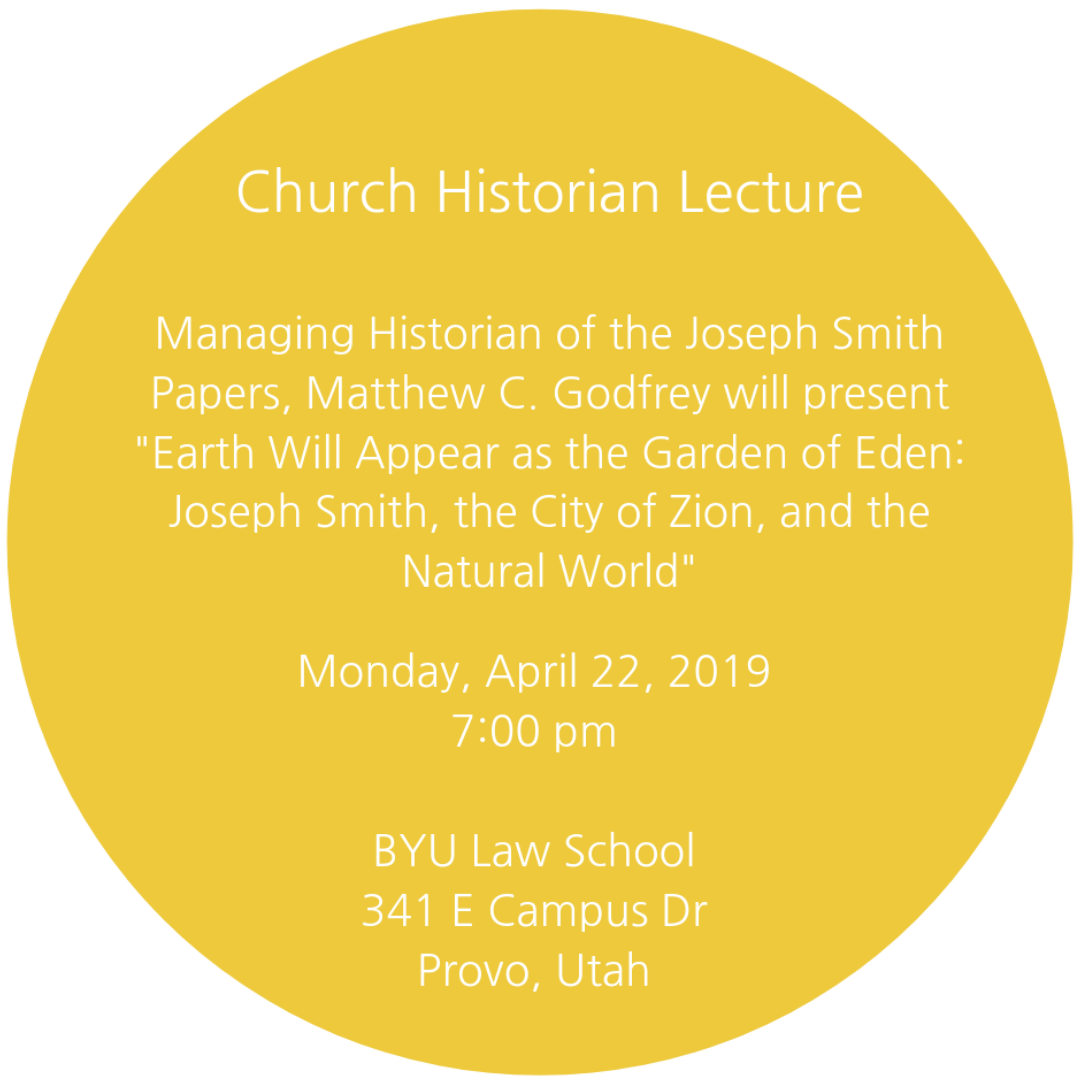
More Than A Pleasant View
"[O]ne way man can leave his mark on the whole face of nature without damage is to plant,” wrote Hugh Nibley. As Adam and Eve were commanded “to dress and to keep” the garden of Eden (Genesis 2:15), we have likewise been counseled to cultivate God’s rooted creations. This admonition was the key to a remarkable native landscaping project in Maryland that wrapped up this month. Over the last two years, LDS Earth Stewardship played a part in improving the Pleasant View Historic Site. Thanks to the hard work and leadership of board member Merikay Smith, LDS Earth Stewardship acquired a $25,000 grant from The Chesapeake Bay Trust and the Montgomery County Water Protection Fund. These funds—combined with $34,471 in donated plants, supplies, and volunteer labor—enabled a transformation of the site’s landscape.
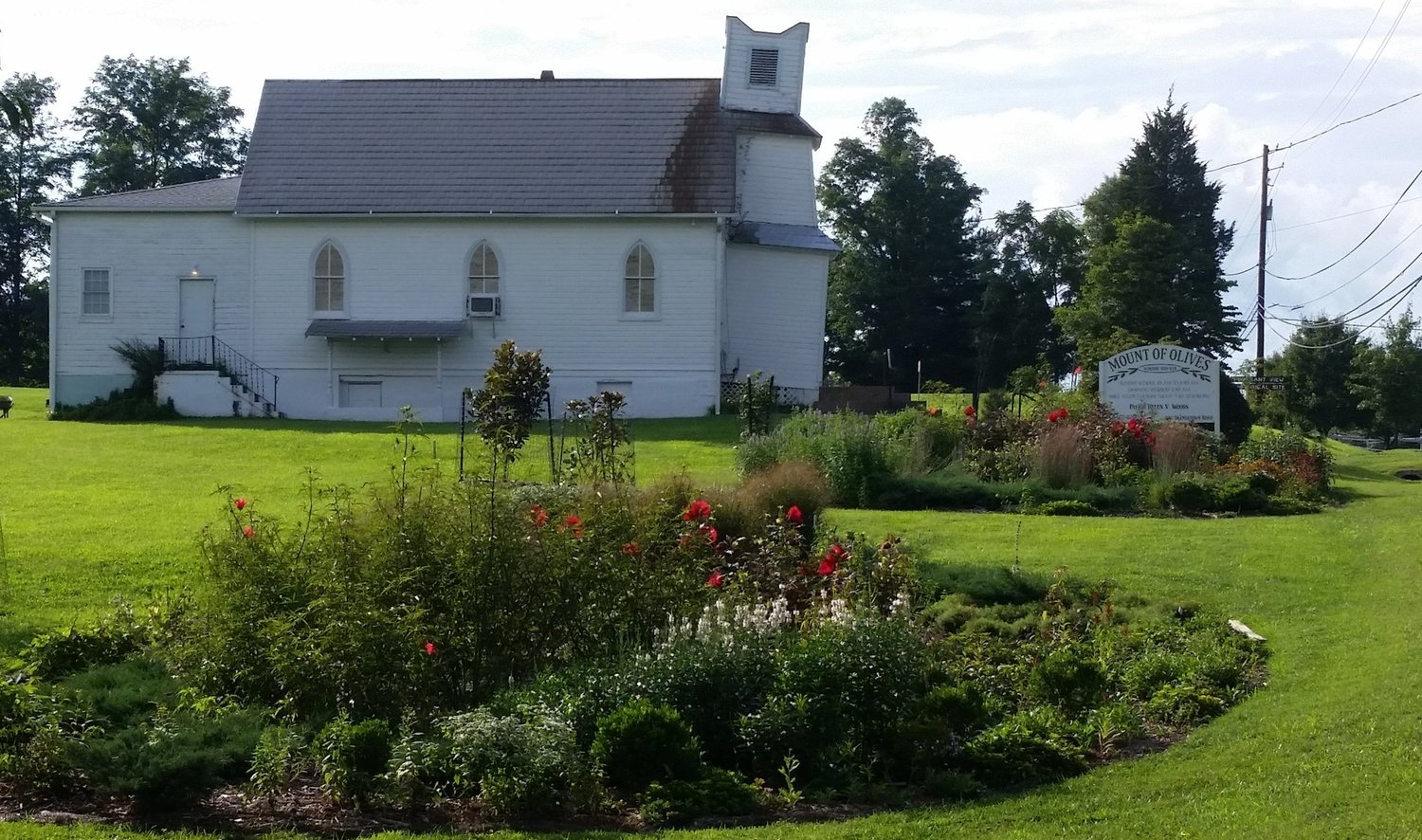

What was once a slope of weedy grass is now adorned by 5,600 square feet of conservation landscaping, including roughly 700 native shrubs and perennials as well as 29 native trees. Using native plants improves storm water management, which protects the water quality of the Muddy Branch (a nearby stream that flows into the Potomac River). Additionally, in the words of Smith, “If each of us tries to plant natives—canopy trees, understory trees, shrubs, perennials and ground cover—we can help the butterflies, birds and other marvelous creatures who share our part of the world.”
Sharing the knowledge used to create this landscape was just as important as the planting. Over 330 community volunteers worked on the site (including LDSES members in the DC region who are part of Earth Stewardship East and members of the nearby Bethesda and Potomac Wards), leading many participants to use the same techniques on their own properties. Over the course of the project, public workshops and tours were also conducted. For those who come in the future, two large educational signs teach the benefits of native plants and small signs identify individual plant species. Through these means, hundreds of people have been—and will be—educated on the advantages of using native plants to create habitat, protect watershed quality, and minimize flood damage.
Beyond functionality, the native plants constitute a beautiful garden that thousands of people view each day as they pass by. The foliage provides a buffer between the cemetery and the highway, making it a quieter and more pleasant place to linger. Thanks to this landscaping project, one nearby resident remarked that the previously forlorn site is now vibrant with life. The hope is that beautifying the grounds will bring more visitors to Pleasant View and help locals cherish this important historic site. The site was originally bought by a group of African-Americans in 1868 so they could have a church and schoolhouse. Their bold determination paved the way for future generations. Last summer, several hundred people gathered for the 150th anniversary celebration of the Pleasant View Historic Site, which was brightened by the revamped landscaping.
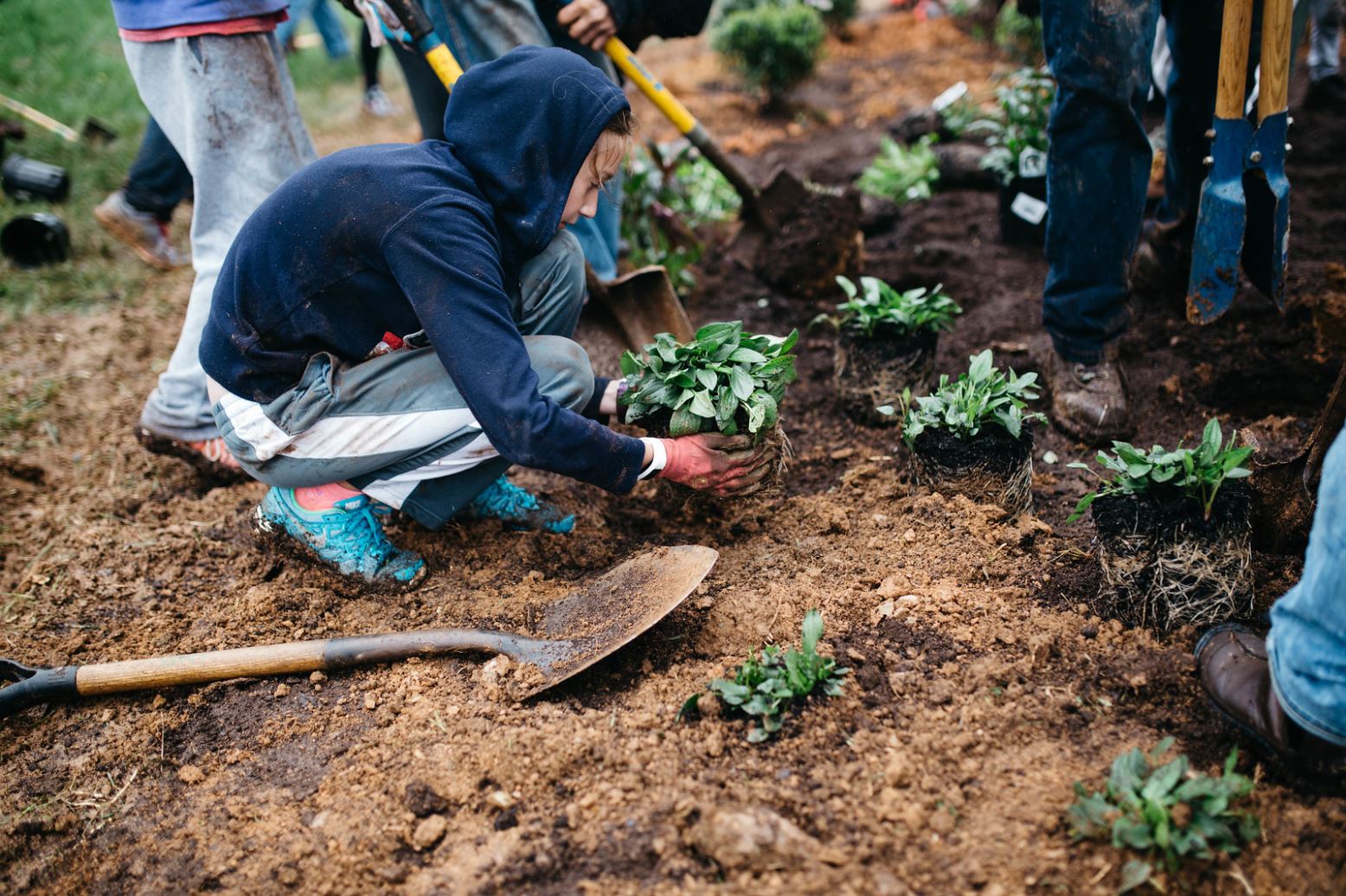
If you’d like to visit the Pleasant View Historic Site, the address is 11810 Darnestown Road, Gaithersburg, MD. For a digital view with more information, visit the Earth Stewardship East website.


